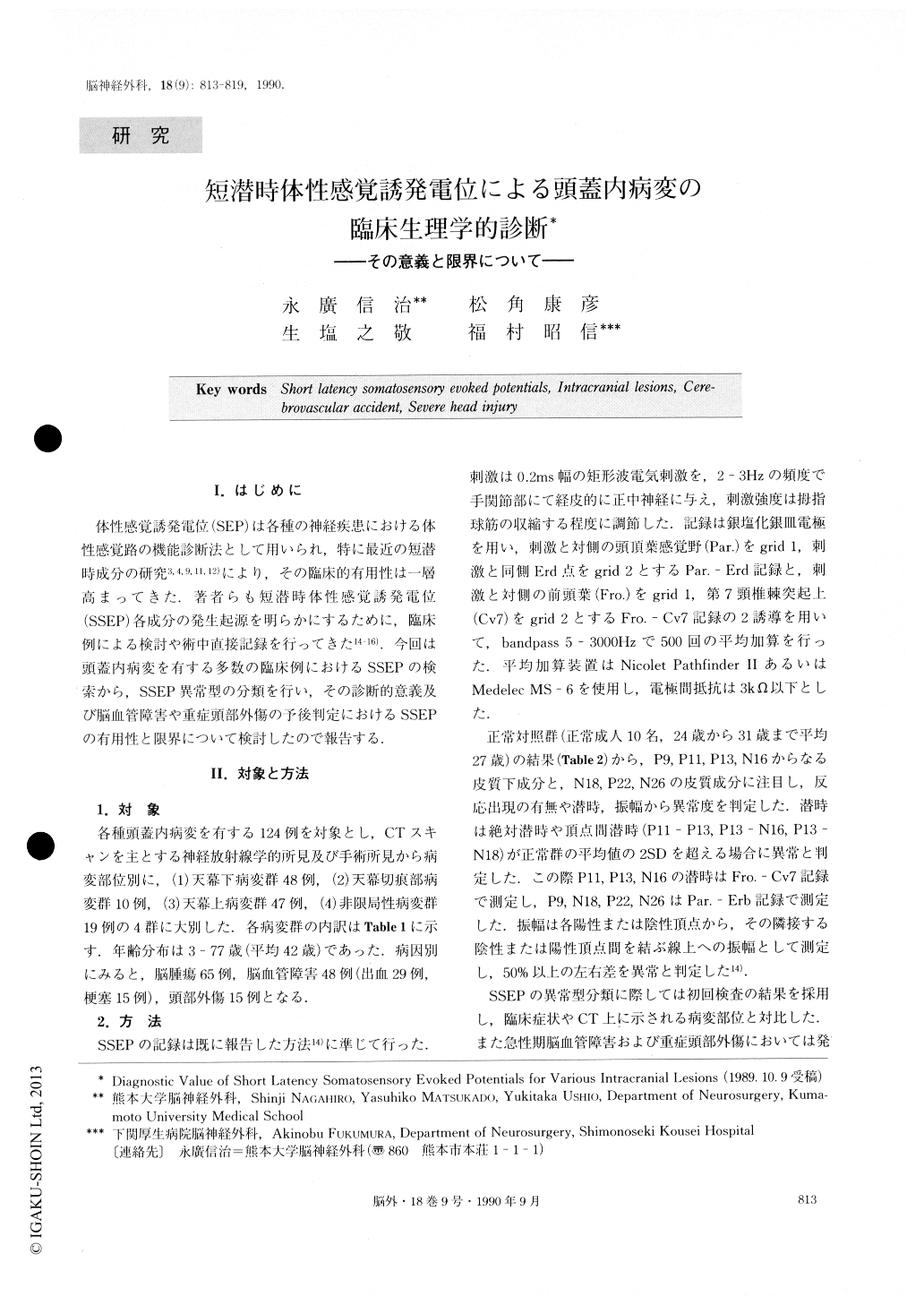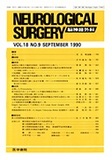Japanese
English
- 有料閲覧
- Abstract 文献概要
- 1ページ目 Look Inside
I.はじめに
体性感覚誘発電位(SEP)は各種の神経疾患における体性感覚路の機能診断法として用いられ,特に最近の短潜時成分の研究3,4,9,11,12)により,その臨床的有用性は一層高まってきた.著者らも短潜時体性感覚誘発電位(SSEP)各成分の発生起源を明らかにするために,臨床例による検討や術中直接記録を行ってきた14-16).今回は頭蓋内病変を有する多数の臨床例におけるSSEPの検索から,SSEP異常型の分類を行い,その診断的意義及び脳血管障害や重症頭部外傷の予後判定におけるSSEPの有用性と限界について検討したので報告する.
Diagnostic value of short latency somatosensory evoked potentials (SSEP) was studied in 129 patients with various intracranial lesions.
Abnormal SSEPs were recorded in 58 of 124 patients (46.8%) and were classified into three types. Type I (6 cases) showed abnormality of late components with N18 being preserved. All patients with type I abnormal-ity had cortical or subcortical lesions in the parietal lobe.
Type II (20 cases) was characterized by abnor-mality of N18 and late components with N16 being pre-served, and mainly seen in patients with a lesion in-volving thalamus and internal capsule.Type III (31 cases) showed abnormality of N16 and N18 which was elicited by unilateral stimulation (IIIa : 11 cases), or bi-lateral stimulation (Mb: 21 cases) , and this indicated brainstem impairment.
The incidence of SSEP abnormality was as high as 93.1% in patients with sensory disturbance, and 23.1% in patients without such disturbance, and it was sug-gested that SSEP is useful to detect subclinical dys-function in the somatosensory pathway.
The SSEP grades defined by Anderson et al were found to be well correlated with the outcome of pa-tients with severe head injury, and the SSEP was more reliable for predicting the outcome of patients than the auditory brainstem evoked responses. The SSEP grades were also fairly well correlated with the outcome of pa-tients with cerebrovascular accidents, although the out-come was not consistent in patients with moderately abnormal SSEP.

Copyright © 1990, Igaku-Shoin Ltd. All rights reserved.


